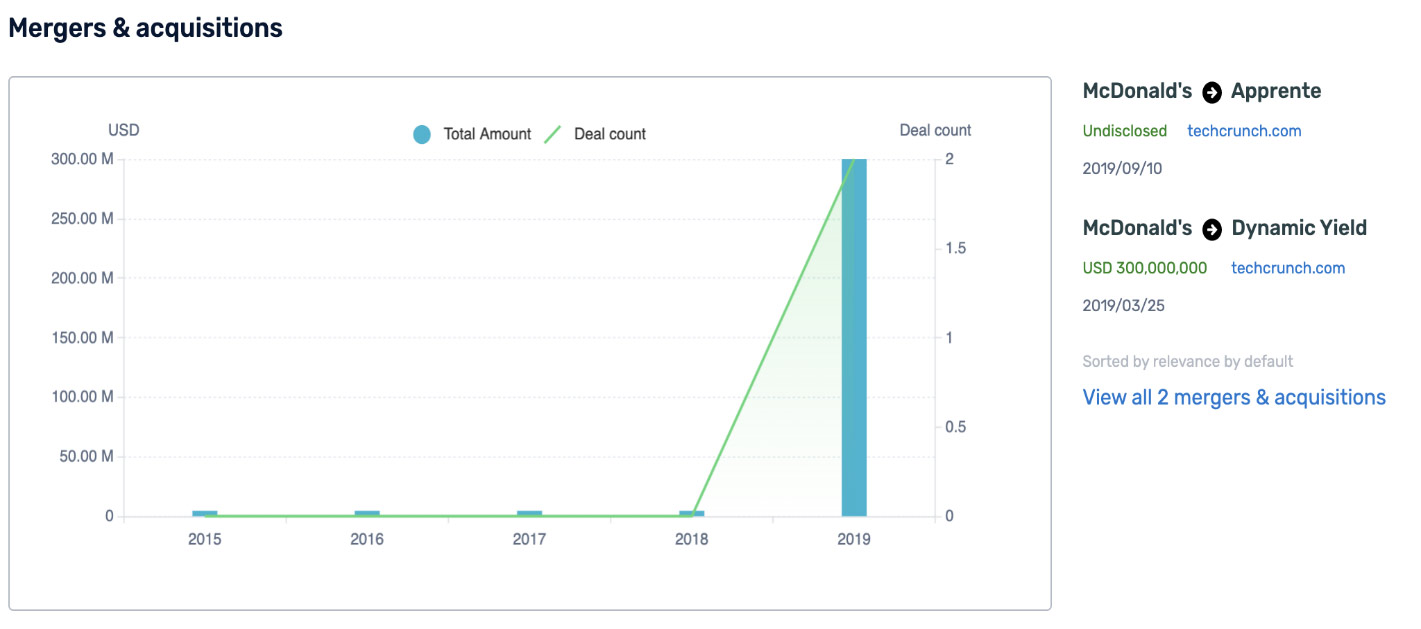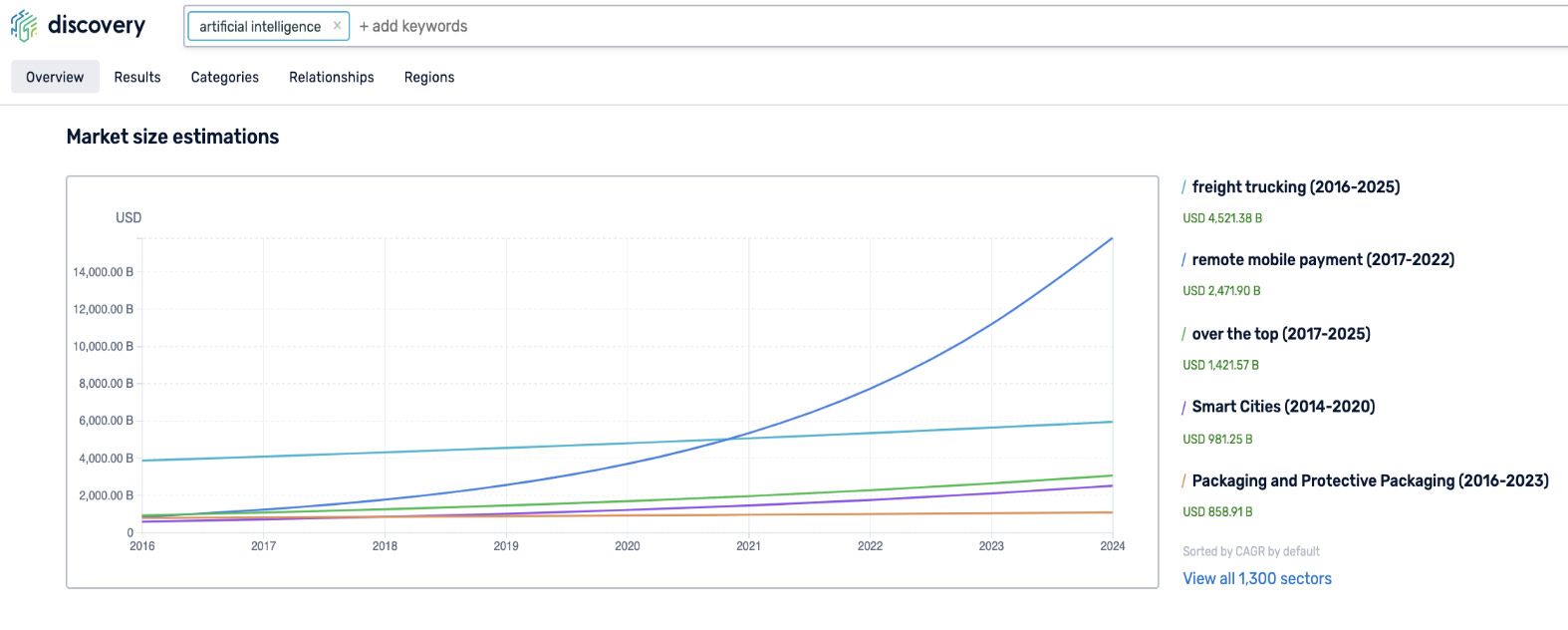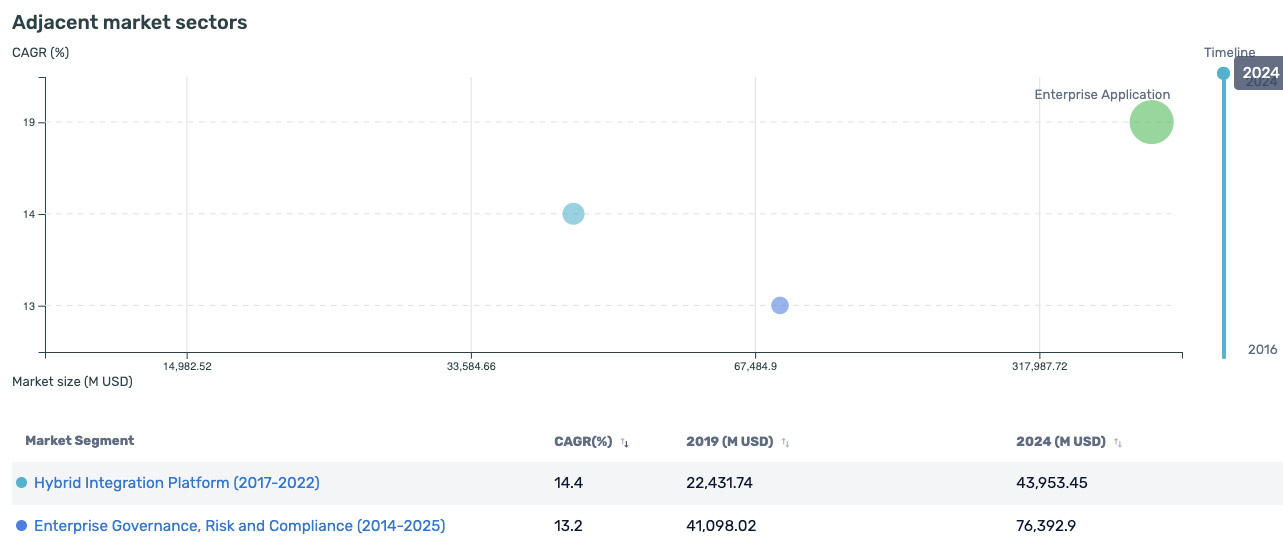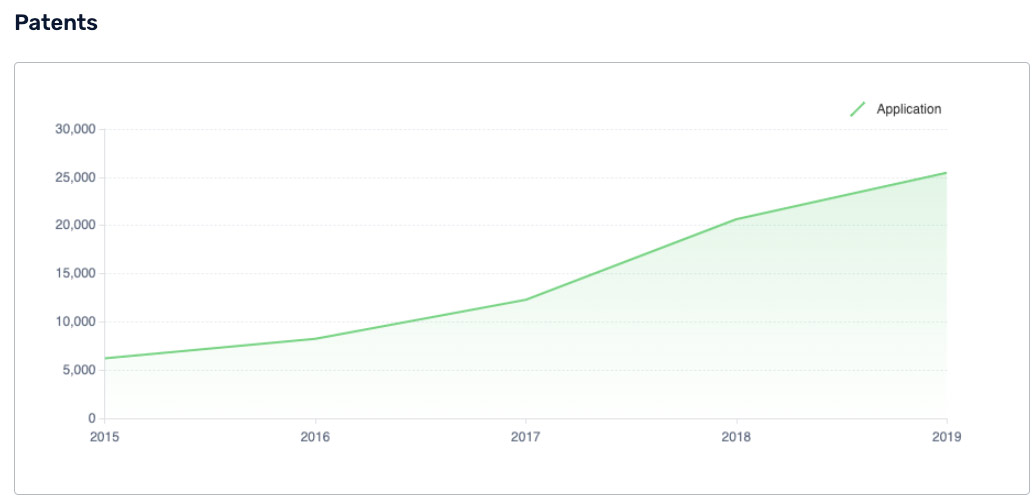The Five Trending Technology Areas You Need to Know About To Make an Impact in 2020
Using innovation intelligence from the PatSnap platform, we identify and explore the top 5 trending techareas set to make an impact in 2020.
With a myriad of different ‘best tech’ lists online that rely on rumors alone, we thought we’d cut through the noise by using our connected innovation intelligence platform to identify what we know will be the top 5 tech areas to watch out for in 2020, and why we think these are the ones to keep on your radar. Be prepared for some surprises…
-
Artificial no more… how AI is closing the gap between the digital world with real world
Artificial intelligence (AI) has been in the news for quite a while. And it’s already making waves in specific technologies, for instance our connected intelligence platform is powered by AI and machine learning algorithms. However, outside of SaaS, it has seemed to take a backseat, or more of an invisible hand, pulling the strings for the course of new tech. We’ve had a look at a few interesting events that we used our platform to find, and they’ve provided a lens on two areas that AI will continue to change the way we do things.
We’ll start with what we saw when we loaded McDonald’s mergers and acquisitions graph on PatSnap Discovery:

Image: McDonald’s acquisition of companies Apprente and Dynamic Yield this year shows an unprecedented bridge being built between fast food and artificial intelligence
McDonald’s has not only acquired Apprente, a software developer that had released a voice-based conversation system, but has also added Dynamic Yield to their list (an Israeli company that reached $38 million in funding last year, focused on Amazon-style personalization software). Looking at both acquired AI-development company websites, Apprente has stated their technology will help order taking at drive-thrus, while Dynamic Yield’s website states the acquisition will help McDonald’s with an AI-powered platform for touch screen menus at restaurants. The topic of personalization opens up possibilities around customized accounts, or McDonald’s remembering specific customer choices or preferences. Does this spell the beginning of customized services? How will that translate to the 69 million customers that visit McDonald’s every day? Expect to learn of other fast food rivals following suit, and more answers to questions on how they do this, as the grab for getting some powerful AI-platforms on-side will drive other fast-food providers to dive headlong into exploring this new tech area.
Also sticking within the realm of AI, we had a look at the tech area overview on PatSnap and noticed this particular market size is predicted to shoot upwards at a rate that leaves all other adjacent areas in the dust:

Image: Market size estimations for segments related to artificial intelligence shows how remote mobile payments will be an area that AI will shine between 2019 and 2024
The remote mobile payment market, which finds itself relying more and more on improvements in AI fraud detection to maintain the highest levels in transactional security, is predicted to take the lead over the freight trucking market in late 2020, and is earmarked to continue along its an ever steeper upward curve, reaching a compound annual growth rate (CAGR) worth $15 billion by 2024.
Looking into the remote mobile payment market sector, we saw these stats:

The jump from $2.5 million to $15.8 million represents a CAGR of 44.7% between 2019 and 2024, which will continue to increase going forward. As mobile wallets are touted as a revolutionary means of bringing financial inclusivity to millions who currently do not have bank accounts in emerging economies, and with China’s Alipay and WeChat Pay now presenting themselves as payment options at Western stores, it’s really no wonder why it’s soaring upwards.
-
Jade and diamonds move aside—Zeolite the new money-making mineral of 2020
What comes to mind when you think of zeolite? If you’re not in the detergent, energy, or alternative health markets, not much of anything right? Well, this environmentally friendly aluminosilicate mineral is commonly used as a commercial adsorbent or catalyst. Thanks to its microporous make-up, zeolite is used in molecular sieves to adsorb molecules; it’s a way to separate chemicals on a microscopic level.
Molecular sieves benefit our lives in everything from steel production, insulated glass windows, fuel ethanol, and even filtering oxygen for breathing apparatuses and air conditioning filter cores.

In looking at the market size chart again, we found it to be one of the largest growing markets. Currently estimated to be worth $3.97bn in 2019, the molecular sieve market is pegged to be worth $5.34bn in 2024, representing a steady CAGR increase of 6%.
The increase in CAGR has made its way to reflect through US government grants too. We can see the specific number of individual projects falling since last year yet see the government money invested in companies that specialize in molecular sieve research and production steadily increasing, from $5.6bn in 2018 to over $7bn in 2019:

Image: Mapping grants in molecular sieves shows how the US government is ramping up its efforts in supporting development in the industry
-
Blockchain continues to win: the rise of BaaS
Using out market sizing tool (deselecting any segments related to life sciences and ranking the results by the largest CAGR), the overwhelming winner we identified has been Blockchain-as-a-Service (BaaS).
A quick breakdown for you: a blockchain is a decentralized, distributed, and sometimes public digital ledger that uses many different computers to record transactions, making fraudulent transactions pretty much impossible among the group that share a network. The records can’t be altered retrospectively and is managed autonomously.
This has been taken to the anything-as-a-service (XaaS) world that software has occupied for the last decade. Vendors are now interested in offering blockchain technology without users having to build systems in-house, saving customers the headache of maintenance, and gaining a ready-to-go service package to deliver the benefits of blockchain’s security, responsiveness and futureproof compatibility with the world of finance in a manageable format.
Blockchain, and particularly BaaS, is growing at a ridiculous rate. CAGR for BaaS is pegged at 90.1%. While the market is worth $1.2bn in 2019, it’s predicted to be worth $31.4 bn in 2024. With predicted trends like this, no reference to blockchain would be willfully ignorant at its best!

Image: Blockchain-as-a-Service or BaaS is making some gains. Estimated to rise from $1.26bn to $31.40bn within 5 years
-
Connected work from anywhere, mobile middleware and enterprise applications
Two interconnected tech areas that represent 245,029 patents to date as seen on our innovation intelligence platform, mobile middleware and enterprise applications reflect the hurrying trend towards taking work anywhere. We’re seeing an ever-growing rise of mobile work apps, virtual personal assistants and cloud computing services. An increasing number of us are using mobile app versions of software like Salesforce, Office 365, and a variety of other essential tools to get real-time updates and boost user-productivity for time sensitive tasks to or from the office or lab.
This freedom to use mobile devices to leverage work will be ever more essential in future, as the idea of flexible or location independent work becomes the norm in various industries like internet, software and web development.

Image: A look at enterprise application in relation to adjacent markets, clearly in the lead with high CAGR and a market value by 2024
When looking at the market overview, we saw as steep yet consistent increase in enterprise application CAGR, which was worth $112.60 bn in 2016 and is earmarked to be worth ¢317.90bn in 2022 alone, before shooting up to $449.47 bn. Mobile middleware, which is focused on streamlined and stress-free device-to-device interaction, mobile-computing integration and mobile application developments will be worth a jaw-dropping $11.4 trillion by 2024, will work hand in hand with enterprise applications to ensure smoother syncs in functionality and updates between various cloud-based platforms and datasets, and your mobile devices. And with more airlines offering in-flight Wi-Fi, and the list of countries set to offer 5G growing, enterprise applications and smoother mobile middleware will be tech areas we’re confident will push some interesting developments in 2020.
-
Moving toward a connected virtually augmented world

Nothing quite captures our imaginations of the future like virtual reality (VR) and augmented reality (AR). We’ve been spoiled by movies and media showing our future selves wearing a variety of deceptively simple wearables that enhance the world around us by superimposing real-time information, updates and news onto reality.
Well, it seems it’s not as far off as we think. There is an ever-increasing interest in developing both virtual and augmented reality wearables that can work seamlessly with our smartphones and mobile devices, for instance the news of Samsung’s design patent released in October 2019 giving us a sneak peek into how future AR smart glasses will look. Let’s see how this excitement translates to the markets…
Virtual reality for consumers is seen to rise by an impressive 133.0% between now and 2024, while augmented reality is predicted to be worth $522.79 bn in 2024, and a steady increase in the numbers of patents applications filed globally, currently totaling 73,000 applications as of 2019. The news is awash with stories or guides around popular games and SaaS companies using AR, to guides around how to best monetize your own. So, if you’re not already looking into it, we’d recommend starting to get your definitive list of main players to understand where this market is heading.
Want to see how we got these insights? Take a demo of PatSnap here.